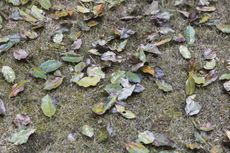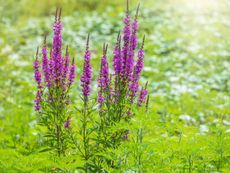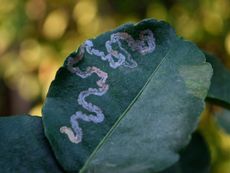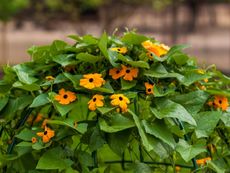Problems
If only things could always go right in the garden. The fact of the matter is, sometimes they don't. Pests, disease, environmental hazards and more can strike your plants. Learn what they are and how to prevent them here.
Explore Problems
Editor's Picks
Problems
-

Beaver Damage To Trees: How To Protect Trees From Beaver Damage
While it's frustrating to notice signs of beaver damage to trees, it's important to recognize the importance of these wetland creatures and strike a healthy balance. Click this article for some helpful tips for protecting trees from beaver damage.
By Mary H. Dyer
-

Needle Cast Treatment – Learn About Stigmina And Rhizosphaera Needle Cast In Trees
Have you ever seen a tree, such as spruce, with healthy-looking needles at the tips of the branches, but no needles at all as you look further down the branch? This is caused by needle cast disease. Find out more in this article.
By Jackie Carroll
-

Trap Plants For Aphids: Plants That Repel Aphids In The Garden
Controlling aphids with plants is an easy and effective practice that anyone can do. Use the information found in this article to learn more about plants that naturally repel aphids as well as trap plants for aphid pests.
By Liz Baessler
-

Types Of Moose Deterrents – Tips On Keeping Moose Out Of The Garden
Moose in the garden is a problem that doesn't happen in all parts of North America. That said, for those gardeners with a lifetime of experience of moose in yards, the key to success is mixing it up and confusing these huge grazers. Learn more here.
By Bonnie L. Grant
-

Castor Oil For Garden Use: Tips On Treating Pests With Castor Oil
Castor oil for garden use may repel voles, moles, and possibly other digging and tunneling animals, such as armadillos. Using castor oil as pest control is a time-honored method and is non-toxic and safe around children and pets. Click here to learn more.
By Bonnie L. Grant
-

Freeze Damage To Plants - Information On How To Treat Frozen Plants
A crucial part of winterizing the garden is to protect half-hardy and sub-tropical plants. But what happens when they become frozen? Learn what to do in this article. Click here for more information.
By Bonnie L. Grant
-

Alternaria Leaf Spot: How To Treat Alternaria In The Garden
Alternaria leaf spot in the garden is a real problem for growers, causing plaque-like spots on leaves and fruits. Treating alternaria can be difficult, so this article will show you how to treat this gardener's nightmare.
By Kristi Waterworth
-

Soft Rot Disease: How To Help Prevent Soft Rot Bacteria
Bacterial soft rot disease is an infection that can devastate a crop of fleshy vegetables but affects other plants too. Learn more about the disease and how to control it in this article.
By Jackie Rhoades
-

Wind Injury To Plants – How To Fix Wind Damaged Plants
Strong winds can damage or kill landscape plants. Dealing with wind damage promptly and properly can improve a plant's chances of survival, and in many cases, the plant will recover its former graceful glory. Learn more in this article.
By Jackie Carroll
-

What Are Boxelder Bugs And What Do Boxelder Bugs Look Like
What are boxelder bugs? Boxelder bugs are major nuisances around the house but, fortunately, boxelder bugs in gardens are relatively harmless. Click this article to learn more about boxelder bugs, including a few tips for boxelder bug control.
By Mary H. Dyer
-

Crabgrass Varieties: Information On Types Of Crabgrass Weeds
There are many different types of crabgrass. How many types of crabgrass are there? There are nearly 35 different species, depending upon whom you ask. Learn more about the most common forms of crabgrass in this article.
By Bonnie L. Grant
-

Phytoplasma Life Cycle – What Is Phytoplasma Disease In Plants
What is phytoplasma disease? Well, first you need to understand the phytoplasma life cycle and how they are spread. New studies indicate that phytoplasma effects on plants can mimic damage shown by psyllid insects or leaf roll viruses. Learn more here.
By Bonnie L. Grant
-

Birds Eating My Flowers: Why Do Birds Eat Flower Buds
Gardeners are constantly worrying about protecting their plants from hungry deer, rabbits, and insects. Sometimes our feathered friends can also eat flowers and buds from certain plants. Click here to learn why this happens.
By Darcy Larum
-

Effects Of Defoliation – What To Do For Defoliated Plants In The Garden
It can start with just a few leaves dropping off a plant before nothing but bare branches are left. There can be many reasons for this defoliation of plants. Click this article to learn what causes defoliation and the effects of defoliation in the garden.
By Darcy Larum
-

What Do Groundhogs Like To Eat In The Garden?
Click here for info on groundhogs and what they like to eat in the garden and landscape.
By Laura Miller
-

Purple Loosestrife Info - Tips For Purple Loosestrife Control
The purple loosestrife plant is an extremely invasive perennial. It has become a menace to the native plants where it chokes out the growth of all its competitors. This article has tips on how to control this weed.
By Jackie Rhoades
-

How To Rid Plants Of Leaf Miners
Leaf miner damage is unsightly and, if left untreated, can end up causing serious damage to a plant. Taking steps to rid plants of leaf miners will improve their overall health. Learn how to kill leaf miners in this article.
By Heather Rhoades





